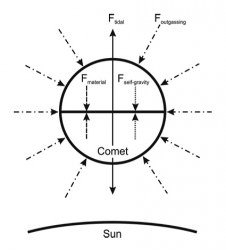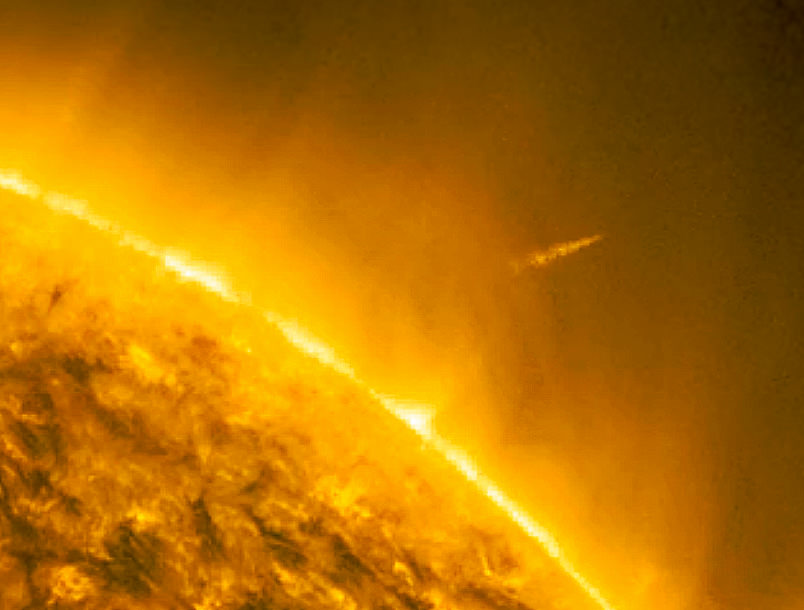Since they were formed in the early solar system, many meteorites offer an unadulterated view into what that solar system was made out of, or what happened to it as we reported before. Recently a team of researchers led by Maggie Thompson at University of California Santa Cruz (UCSC) took a look at the chemical composition of three different chondritic meteorites, which have largely been untouched since before the planets were formed. Their composition was different than current models predicted, and could lead to a better understanding of early planetary atmospheres.
Continue reading “Meteorites Hold Early Atmospheres From Across the Solar System”How Did Comet Lovejoy Survive Its Trip Around The Sun?
[/caption]
It was just about three months ago that the astronomy world watched in awe as the recently-discovered comet Lovejoy plummeted toward the Sun on what was expected to be its final voyage, only to reappear on the other side seemingly unscathed! Surviving its solar visit, Lovejoy headed back out into the solar system, displaying a brand-new tail for skywatchers in southern parts of the world (and for a few select viewers above the world as well.)
How did a loosely-packed ball of ice and rock manage to withstand such a close pass through the Sun’s blazing corona, when all expectations were that it would disintegrate and fizzle away? A few researchers from Germany have an idea.
Scientists from the Max Planck Institute for Extraterrestrial Physics and the Braunschweig University of Technology have hypothesized that Comet Lovejoy managed to hold itself together through the very process that, to most people, defines a comet: the outgassing of sublimated icy material.
As a comet near the Sun, the increased heating from solar radiation causes the frozen materials within the nucleus to sublimate — go directly and suddenly from solid to gas, skipping the liquid middle stage — and, in doing so, burst through the surface of the comet and create the long, hazy reflective tail that is so often associated with them.

In the case of Lovejoy, which was on a direct path toward the Sun, the sublimation itself may have provided enough outward force across its surface to literally keep it together, according to the team’s research.
“The reaction force caused by the strong outgassing (sublimation) of the nucleus near the Sun acts to keep the nucleus together and to overcome the tidal disruption,” the paper claims.
In addition, the team states that the size of the comet’s nucleus can be derived using an equation that takes into consideration the combined forces of outgassing, the material composition of the comet’s nucleus, the comet’s own gravity and the tidal forces exerted by the comet’s close proximity to the Sun (i.e., the Roche limit).
Using that equation, the team concluded that the diameter of Comet Lovejoy’s nucleus is anywhere between 0.2 km and 11 km (.125 miles and 6.8 miles). Any smaller and it would have lost too much material during its pass (and had too little gravity); any larger and it would have been too thick for outgassing to provide enough counterbalancing force.
If this hypothesis is correct, taking a trip around the Sun may not mean the end for all comets… at least not those of a certain size!
Watch the video of Lovejoy’s Dec. 15 solar swing below:
The paper was submitted to the journal Icarus on March 8, 2012 by Bastian Gundlach. See the full text here.


